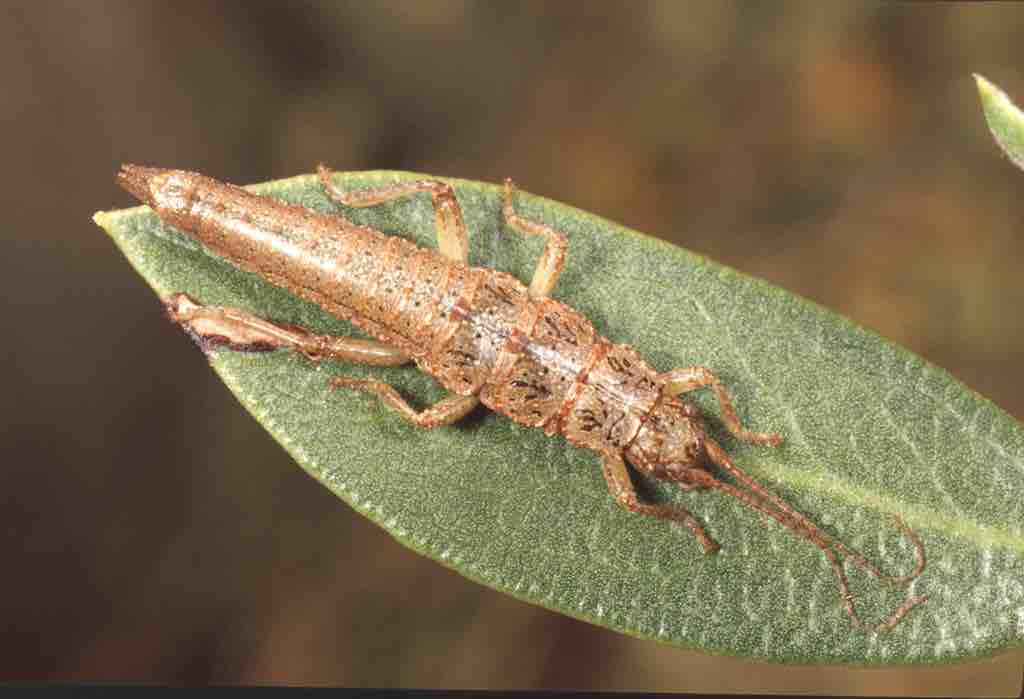Timema Discovery Project
"Answering Big Questions
by Studying Small Insects"
Timematidae: Timemas

WHAT IS A TIMEMA?
Timemas are a lineage of small flightless insects, in the group known as "walking sticks" or "stick insects" (the Order Phasmatodea, or sometimes called Phasmida). They share a common ancestor with all other stick insects, but are themselves evidently the most ancient lineage in the group. Like many flowers you may be familiar with, (petunias, irises, zinnias, etc.) their "common name" is the same as their "scientific name", but when used as a scientific name, the name is capitalized and italicized, and automatically considered both singular and plural. So, you can write "All timemas are herbivores" or you can write "All Timema are herbivores" and either way is acceptable.
WHAT DO THEY LOOK LIKE?
Timemas are small, slender, wingless insects that somewhat resemble earwigs. They are typically well camouflaged, in greenish, brownish, grayish, or yellowish colors, sometimes with stripes or sometimes with small spots. Not counting their antennae, even the largest species are typically no longer than an inch. They cannot bite or sting; their primary defense is their camouflage, though they possess glands in their thorax which produce unpalatable chemicals to deter predators. CLICK HERE TO SEE TIMEMA IMAGES ON BUGGUIDE
WHERE DO THEY LIVE?
Timemas occur only along the West Coast of North America and the mountains of the desert Southwest. Almost all the known species occur in the US state of California, with a few species in (or extending into) Oregon, Nevada, Arizona, and Baja California in Mexico. CLICK HERE TO SEE DISTRIBUTION MAP (note: some of the names on the map are misspelled, and a few species are not shown)
HOW MANY SPECIES ARE THERE?
There are, at present, 21 described species of timemas (see Gallery), all in the genus Timema, which is the only genus in the family Timematidae. The first species description of any Timema was in 1895. There are, however, several species not yet formally described, and probably others that have yet to be discovered ‐ which is where we can use YOUR help!
WHAT DO THEY EAT?
All timemas are herbivores: they only eat leaves, and are only active for a few months out of the year in any given location (usually springtime and summer). Many species are very limited as to which species of host plants they will feed on, and they are therefore considered specialist herbivores. All but a few of the different species of timemas fall into two general categories of host plant preferences; those that feed on conifers (pine and fir trees, and their relatives), and those that feed on chaparral shrubs and trees (oaks, Ceanothus, chamise, manzanita, etc.).
Content last updated March 2018